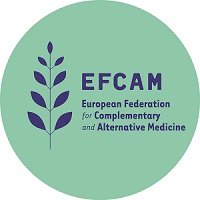Here are brief descriptions of several major CAM modalities:
Acupuncture
Acupuncture is a system of healing which has been practised in China and other Eastern countries for thousands of years. It is used to treat people with a wide range of illnesses. Its focus is on improving the overall well being of the patient, rather than the isolated treatment of specific symptoms. According to traditional Chinese philosophy, our health is dependent on the body’s motivating energy – known as Qi – moving in a smooth and balanced way through a series of meridians (channels) beneath the skin.
Qi consists of equal and opposite qualities – Yin and Yang – and when these become unbalanced, illness may result. By inserting fine needles into the channels of energy, an acupuncturist can stimulate the body’s own healing response and help restore its natural balance. The flow of Qi can be disturbed by a number of factors. These include emotional states such as anxiety, stress, anger, fear or grief, poor nutrition, weather conditions, hereditary factors, infections, poisons and trauma. The principal aim of acupuncture in treating the whole person is to recover the equilibrium between the physical, emotional and spiritual aspects of the individual.
For more information on Acupuncture and its practice in Europe, including a list of national professional associations of practitioners, please visit the web-site of the European Traditional Chinese Medicine Association: ETCMA
Reflexology
Reflexology is an art which deals with the principle that there are reflex areas in the feet, hands and ears which correspond to all of the glands, organs and parts of the human body. Reflexology is a unique method of using pressure applied by the thumb and fingers on these reflex areas in order to support nature in maintaining homeostasis, as far as may be achieved for each individual. It does this by stimulating the reflex areas which may help to relieve stress and tension, improve the blood supply to all areas of the body and promote the correct functioning of nerve impulses.
Note that in Reflexology the word ‘stimulate’ refers to an action that may produce a response, this response could be sedation, stimulation or no response at all. Reflexology aims to treat the imbalances of each individual and to alleviate and improve symptoms. It does not however diagnose a specific medical problem.
For more information on Reflexology and its practice in Europe, including a list of national professional associations of practitioners, please visit the web-site of the Reflexology in Europe Network: RIEN
Shiatsu
Shiatsu is an autonomous natural healthcare system which originated in Japan, and is influenced by Chinese and more recently Western knowledge. It derives its theoretical and practical roots from the ancient traditions of Far Eastern healing and philosophies and the holistic understanding of life and health based upon them.
The aim of shiatsu is to stimulate and support the processes of natural self healing, well-being and personal growth, and to maintain health, through balancing the energetic system of a person. The method uses the application of pressure, and of energetic and physical touch to the body’s energy channels and points to balance the circulation of the body’s energy (Ki or Chi).
As a self-regulating health care and health promotion system it supports the development of a new holistic understanding of health in Europe.
For more information on Shiatsu and its practice in Europe, including a list of national professional associations of practitioners, please visit the web-site of the European Shiatsu Federation: ESF
Traditional Chinese Medicine
Traditional Chinese Medicine, also known as TCM, is a range of traditional medical practices used in China that developed over several thousand years. These practices include acupuncture, herbal medicine, moxibustion and massage. TCM is a form of Oriental medicine, which includes other traditional East Asian medical systems such as Japanese and Korean medicine. TCM says processes of the human body are interrelated and constantly interact with the environment. Therefore the theory looks for the signs of disharmony in the external and internal environment of a person in order to understand, treat and prevent illness and disease.TCM theory is based on a number of philosophical frameworks including the Theory of Yin-yang, the Five Elements, the human body Meridian system, Zang Fu organ theory, and others. Diagnosis and treatment are conducted with reference to these concepts. TCM does not usually operate within a western scientific paradigm but many practitioners make efforts to bring practices into an evidence-based medicine framework.
For more information on TCM and its practice in Europe, including a list of national professional associations of practitioners, please visit the web-site of the European Traditional Chinese Medicine Association: ETCMA.
Homeopathy
Homeopathy is system of medicine which is based on natural laws which have always existed but which were only discovered, understood and applied therapeutically some 200 years ago. ‘Similia similibus curentur’ is the Latin phrase which was then chosen to describe the ‘law of similars’ which underpins homeopathy’s application – put simply it means ‘like cures like’.
The way of similars, the homeopathic way, is to give the patient who has a set a of particular symptoms which characterise their condition, a minute dose of a substance which in large doses causes similar symptoms of an artificially inflicted disturbance in a healthy person. e.g. homeopathically prepared doses of onion (allium cepa) will treat certain cases of hay fever where the symptoms match those of someone suffering the effects of inhaling the fumes of a fresh chopped onion.
For more information on homeopathy and its practice in Europe, please visit the web-site of the Federation of Irish Complementary Therapy Associations: FICTA
